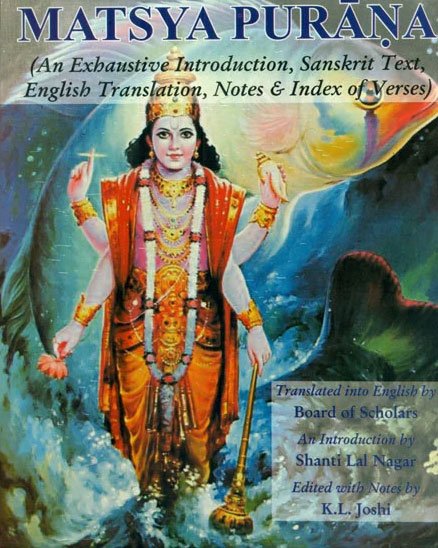The Matsya Purana (critical study)
by Kushal Kalita | 2018 | 74,766 words | ISBN-13: 9788171103058
This page relates ‘Main features of Samkhya philosophy’ of the English study on the Matsya-purana: a Sanskrit text preserving ancient Indian traditions and legends written in over 14,000 metrical verses. In this study, the background and content of the Matsyapurana is outlined against the cultural history of ancient India in terms of religion, politics, geography and architectural aspects. It shows how the encyclopedic character causes the text to deal with almost all the aspects of human civilization.
Part 2 - Main features of Sāṃkhya philosophy
The Sāṃkhya system is regarded as the most ancient system of philosophy in India. This is a pluralistic philosophy which accepts two ultimate realities, viz., Puruṣa and Prakṛti. The propounder of Sāṃkhya system is Kapila, who wrote the Sāṃkhyasūtra. The names of Āsuri, Pañcaśikha, Vindhyavāsa, Devala etc. are also traditionally acclaimed Sāṃkhya thinkers. But the works of these teachers are not available now. The earliest and the most popular work of this system is Īśvarakṛṣṇa’s Sāṃkhyakārikā. However, the philosophical concepts of the Sāṃkhya system were rooted in the epics and Purāṇas. The Mahābhārata has discussed the Sāṃkhya principles in many places. It mentions that this system is called Sāṃkhya system as it deals with numbers and also Prakṛti and the Twenty four (24) principles.[1] The Mahābhārata has also pointed out that all the knowledge has come out of Sāṃkhya philosophy.[2] The Gītā, which is a part of the Mahābhārata, also mentions about Sāṃkhya as well as Yoga. Other Purāṇas also follow Sāṃkhya evolution system in their theory of creation. Not only the epics and Purāṇas, the Āyurvedic texts of Carakasaṃhitā and Suśrutasaṃhitā also deal with the Sāṃkhya concepts.
There are several opinions regarding the meaning of the term sāṃkhya. It is generally believed that the word has been derived from the word saṃkhyā which means number. As the system enumerates and deals with twenty five (25) principles, so it is called Sāṃkhya. Some others opine that the term sāṃkhya is derived from root khyā with the prefix sam. The word then means right knowledge as the root khyā denotes knowledge (samyag-jñāna). It teaches the knowledge of separation the Puruṣa from the Prakṛti.[3]
The Sāṃkhya system is a pluralistic system where there are three categories, viz., vyakta, avyakta and jña. Among these the avyakta and jña are also called Prakṛti and Puruṣa which are the ultimate realities. Vyakta constitutes all other objects of the world. The Sāṃkhya philosophy regards avyakta or Prakṛti as the ultimate cause of world creation. Avyakta or Prakṛti or Pradhāna is the primordial matter from which the world of matter proceeds. Prakṛti is the uncaused cause of the world. It is not perceived but inferred from its effects.[4] Prakṛti is material, indeterminate and eternal. It is constituted of three guṇas, viz., sattva, rajas and tamas. It is the state of equilibrium of these guṇas.
It is regarded as the uncaused cause, otherwise there will be infinite regress. All effects are finite and produced from some cause. Mahat and other evolutes are produced by Prakṛti. If Prakṛti is also accepted as an effect, then there must be some other substance which will also require another substance per its cause, thus leading to infinite regress. Hence, Prakṛti itself is regarded as the ultimate cause of the world. Prakṛti is one.[5]
The Sāṃkhya philosophy regards Puruṣa as jña, which is the ultimate principle. It is the self, the spirit and the ultimate knower. Puruṣa is conscious, consciousness is its very nature. It is eternal and beyond time and space. It is Unlimited. According to the Sāṃkhyas, Puruṣa is not doer and is devoid of action. It is the witness self.[6] The Sāṃkhyas also accept that Puruṣa is not one, but many.[7]
Vyakta is the effect which comprises the entire world. According to the Sāṃkhya philosophy, there are Twenty three (23) vyaktas, viz., mahat, ahaṃkāra, five tanmātrās, eleven indriyas and five mahābhūtas.
Footnotes and references:
[1]:
[2]:
Ibid., XII.301.108
[3]:
vyaktāvyaktajñavijñānāt/ Sāṃkhyakārikā, 2
[4]:
Ibid., 15-16
[6]:
Sāṃkhyakārikā, 18-19
